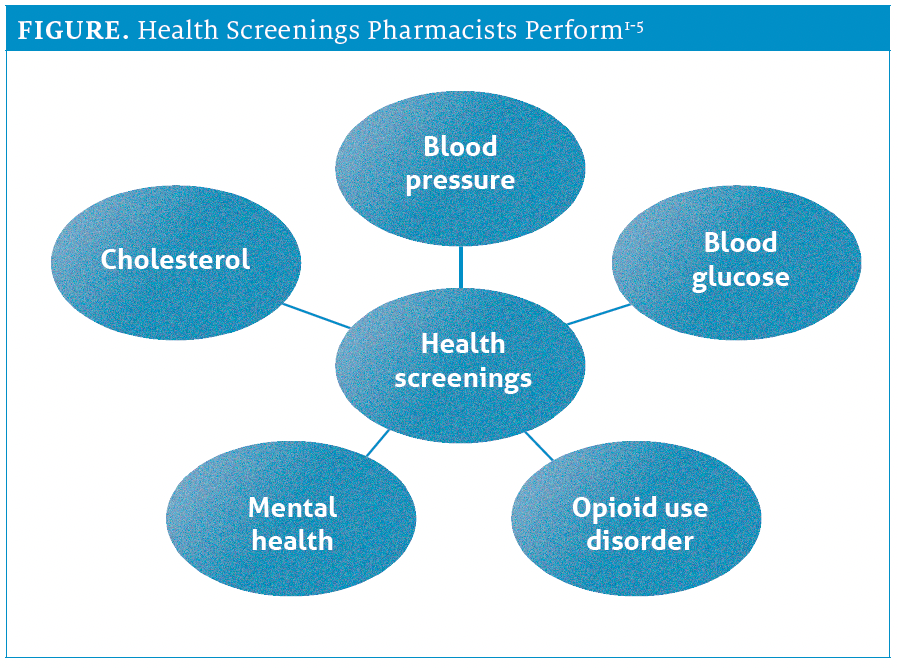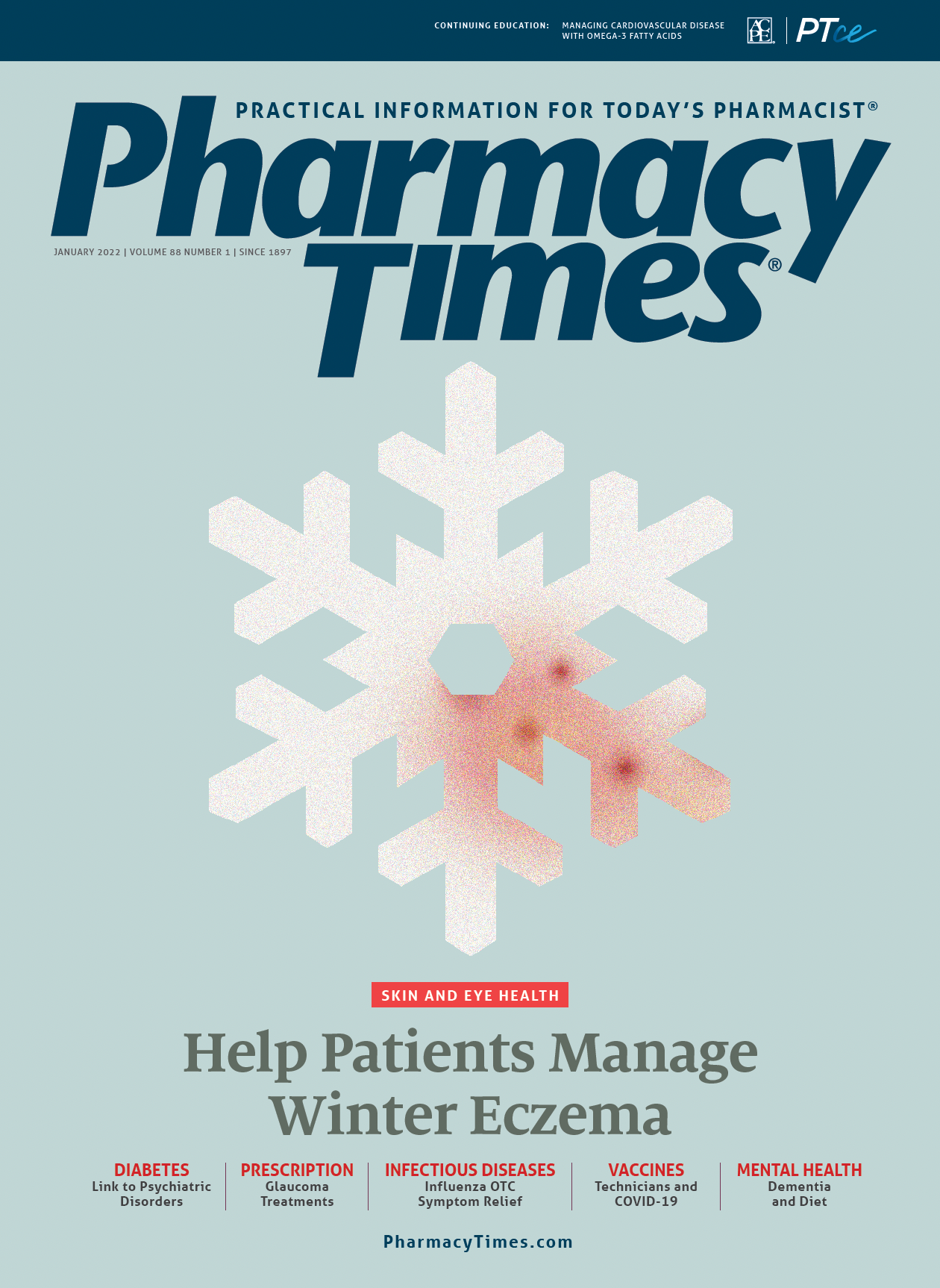Publication
Article
Pharmacy Times
Pharmacists Play Vital Role in Health Screenings
Author(s):
They are in a unique position to evaluate patients in their practice settings to improve health outcomes.
Health screenings are an important tool for pharmacists to provide as part of medication therapy management (MTM) services. Screenings pharmacists can offer as part of preventive care, include those for blood glucose and pressure readings, cholesterol levels, opioid use disorder (OUD), and mental health (Figure1-5). Using technology can also alert pharmacists to look for risk factors.1 Pharmacists are in a unique position to provide screenings in their MTM practice settings to improve patient health outcomes and reduce racial disparities.

Pharmacies can screen patients on an appointment-based model when they pick up medications, which can also improve adherence.1 The CDC has established a framework for community pharmacists and physicians to promote preventive health services.2 In 2018, the Allegheny County Health Department received a cooperative agreement from the CDC as part of its Racial and Ethnic Approaches to Community Health (REACH) initiative to implement a program for Black individuals in 6 communities to reduce health disparities.2 Services included behavioral counseling, referrals, and screenings. The program included 702 patients, and 72% were referred to clinical and social services, with pharmacists playing an integral role in preventive health measures.2

Pharmacy students can also make a huge impact on patient care through health screenings.
One study evaluated the clinical impact of an intensive community pharmacy–based health and wellness Introductory Pharmacy Practice Experience (IPPE) completed during the second year of pharmacy school.3
The 1-week rotation gave pharmacy students the opportunity to provide clinical services to patients in the community pharmacy setting and included the following activities: administering immunizations, performing blood glucose and pressure screenings, and providing patient education under the supervision of licensed pharmacists.3 There were 147 pharmacy students who completed the IPPE at 89 community pharmacy training sites, and 3458 patient health assessments were performed.3 The study results showed that pharmacy students were able to enhance their clinical skills and improve patient health outcomes through the IPPE.3 This demonstrates the important role student pharmacists can play as part of the health care team to perform health screenings in the community pharmacy setting.
Pharmacists can play a critical role in OUD screenings in the community setting to prevent drug overdoses. More than 96,000 drug overdose deaths occurred between March 2020 and March 2021 during the height of the COVID-19 pandemic, according to the CDC.4
Pharmacists also play a critical role in ensuring patients have access to the lifesaving drug, naloxone, for opioid overdose reversal. The Resources Encouraging Safe Prescription Opioid and Naloxone Dispensing (RESPOND) tool kit was designed to enhance opioid safety screening and communication practices in community pharmacy settings.5 The tool kit consists of a 3-module online training course and printable materials, including a patient screening and communication algorithm, pharmacist-prescriber communication checklist, and prescription drug monitoring program (PDMP) RESPOND course guidebook for point-of-care use.5
These screening tools, along with the PDMP, can increase awareness of the opioid epidemic and promote communication among patients, pharmacists, and prescribers. The screening and communication algorithm includes a 3-step process.
Step 1 includes the initial screening and drug utilization review, with identification of prescription red flags. Step 2 is the safety trigger review that involves assessing the opioid dose and potential drug interactions, such as benzodiazepines, and identification of “doctor shopping.” Step 3 involves responding to the patient to discuss opioid concerns and communicating with the patient and prescriber.5
Jennifer Gershman, PharmD, CPh, PACS, is a drug information pharmacist and Pharmacy Times contributor who resides in South Florida.
REFERENCES
1. 4 ways pharmacists can become champions of preventive care. McKesson. November 26, 2018. Accessed November 11, 2021. https://www.mckesson.com/Blog/Pharmacists-Champions-Preventive-Care/
2. Elliott JP, Christian SN, Doong K, Hardy HE, Mendez DD, Gary-Webb TL. Pharmacist involvement in addressing public health priorities and community needs: the Allegheny County Racial and Ethnic Approaches to Community Health (REACH) project. Prev Chronic Dis. 2021;18:E07. doi:10.5888/pcd18.200490
3. McDowell L, Helmer R, Stevenson TL, Sierko A, Braxton Lloyd K. Clinical impact of a community pharmacy-based health and wellness introductory pharmacy practice experience. J Am Pharm Assoc (2003). 2021;S1544-3191(21)00427-1. doi:10.1016/j.japh.2021.10.008
4. Provisional drug overdose death counts. CDC. Updated November 17, 2021. Accessed November 11, 2021. https://www.cdc.gov/nchs/nvss/vsrr/drug-overdose-data.htm
5. RESPOND toolkit. PharmacistRespond.org. Accessed November 11, 2021. https://pharmacistrespond.org/






